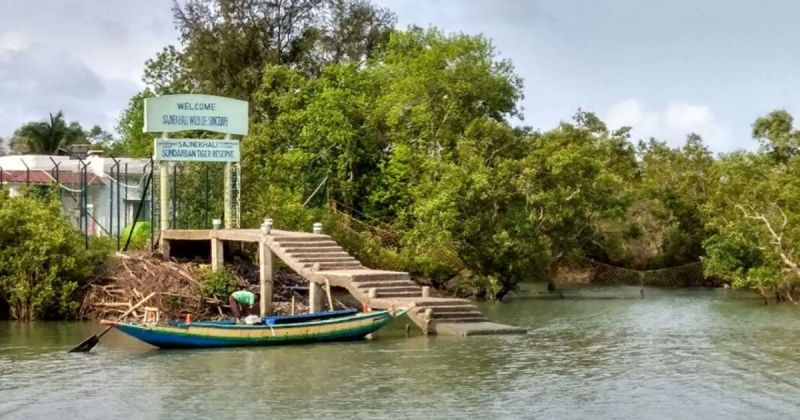- BNP senses ‘dangerous conspiracy’ against democratic transition |
- CEC Vows Credible Election to End Stigma |
- High-level meeting reviews country’s economic progress |
- Dhaka suspends visa, consular services at its Delhi, Agartala Missions |
- Govt to cut savings certificate profit rates from January |
Forest density in Sundarbans’ water bodies declines: Study
Sundarbans Day to be observed Wednesday

Sundarbans biodiversity
Dhaka, 13 Feb – February 14 (Wednesday) will be observed as 'The Sundarbans Day' in the country. The day was declared as 'Sundarbans Day' in 2001 to support the conservation of the important ecosystem.
Ahead of the 'The Sundarbans Day', Change Initiative, a leading NGO, in a study titled: “Rising Tides, Roaring Futures: The Sundarbans' Quest for Survival”, found that Sundarbans has been witnessing a decline in forest density and an increase in poisonous substances in water bodies due to the climate change. This has been causing habitat fragmentation and biodiversity loss.
The Change Initiative said that Bangladesh must take immediate steps for conservation of the ecosystem, through national and international efforts; this must include joint management of protected areas, and actions against those contributing to degradation of the ecosystem.
The Sundarbans is the largest mangrove forest in the world, located in the delta region of the Bay of Bengal. Its intricate network of tidal waterways, mudflats, and diverse flora and fauna play a crucial role in maintaining coastal ecosystems and play a significant role in the ecosystem of Bangladesh.
According to the Change Initiative’s study, the changes in land cover of the Sundarbans from 1973 to 2024, show a loss of dense forest and an increase of water bodies, indicating habitat loss and fragmentation.
As per the analysis, from constituting forest cover of 94.2% of the area, there was a decline to 91.5%.
This indicates that there is a considerable decrease in critical ecological strongholds that provide vital natural services, ranging from carbon sequestration to coastal protection and biodiversity sustenance.
Researchers estimate that there has been a loss of USD 3.3 billion in ecosystem services of the Sundarban Biosphere Reserve during the last 30 years, over 80% of which is provided by mangroves.
Collected data further shows an increase in water body coverage from 4.8% to 7.6%, causing environmental concerns due to habitat fragmentation and biodiversity loss.
The less dense forest shows a slight decrease from 1.0% to 0.9%, indicating declining forest robustness and potential degradation due to anthropogenic pressures or natural forest dynamics.
Despite the increasing waterbody coverage, the 210 species of fish, shrimp, crabs, Mollusca, and lobster, native to the region; is facing depletion due to the widespread use of poisonous substances for fish baits.
According to the study, the current threats and challenges faced by the Sundarbans must also be considered, such as tiger population decline, Sundari tree disappearance, Geographical Indication (GI) rights for 'Sundarbans honey', and establishment of thermal coal plant and risky infrastructure.
M Zakir Hossain Khan, Chief Executive of Change Initiative and International Climate and Environmental Policy Expert, said, “Conservation of the Sundarbans is crucial and requires a multifaceted approach. This issue must be included in Loss and Damage Funding, as it is a transboundary concern”.
Additionally, to locally address issues of pollution, alternative sources of income must be offered to local businesses and plants who damage the local ecosystem and those who continue to contribute to pollutants in the area must face consequences, such as loss of government benefits, he said.
The Sundarbans, a region in India and Bangladesh, face numerous threats. The way forward in addressing the issues requires a multi-dimensional approach.
Bangladesh and India need to strengthen transboundary cooperation in the Sundarbans region, including joint management of protected areas, coordinated conservation efforts, and shared research initiatives, he said.
Digital monitoring systems, such as drones, can be used to track illegal activities and wildlife movements. Sensor-based technologies can monitor salinity levels, and methods to combat illegal fishing should be introduced.
Expanding protected areas and wildlife sanctuaries is crucial. Historical administrative models should be revived, and regional and international agreements should be promoted to protect 30% of land and sea by 2030.
These solutions will help protect the Sundarbans from development pressures and human encroachment, ensure critical habitats are safeguarded, and promote regional and international agreements, said the Change Initiative. - UNB

